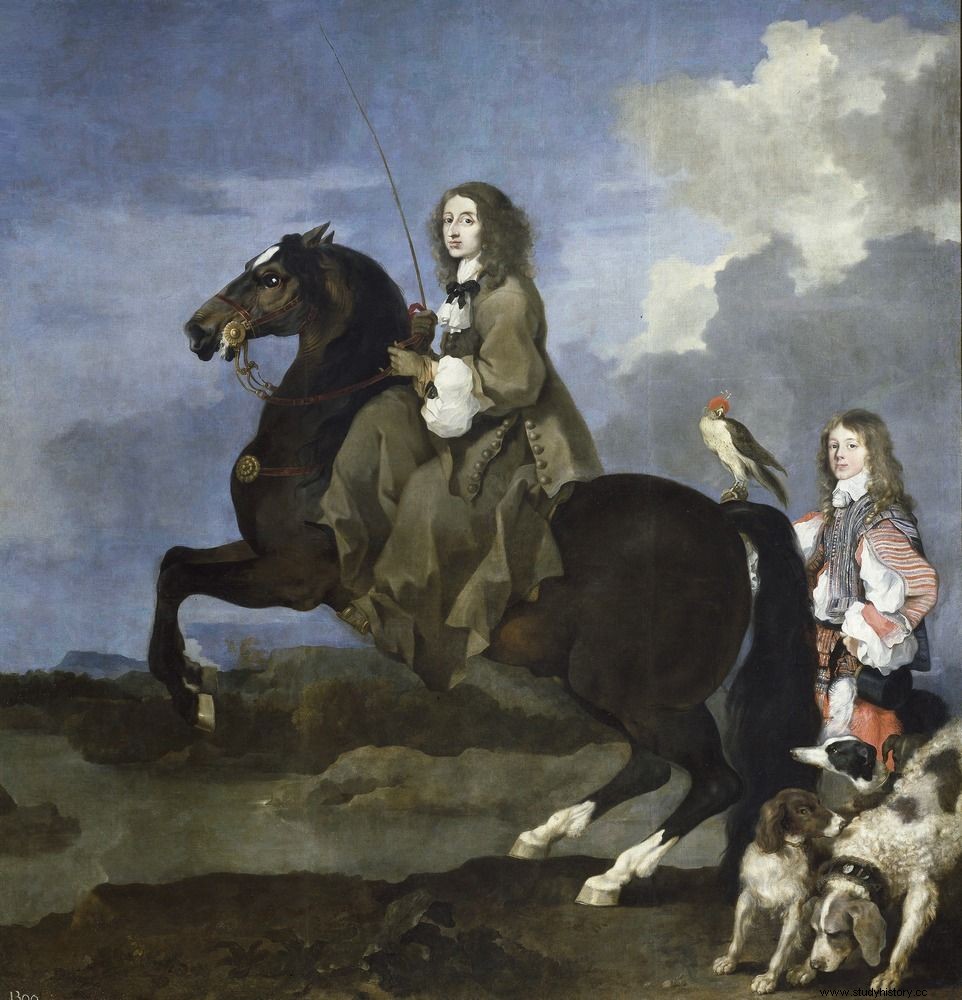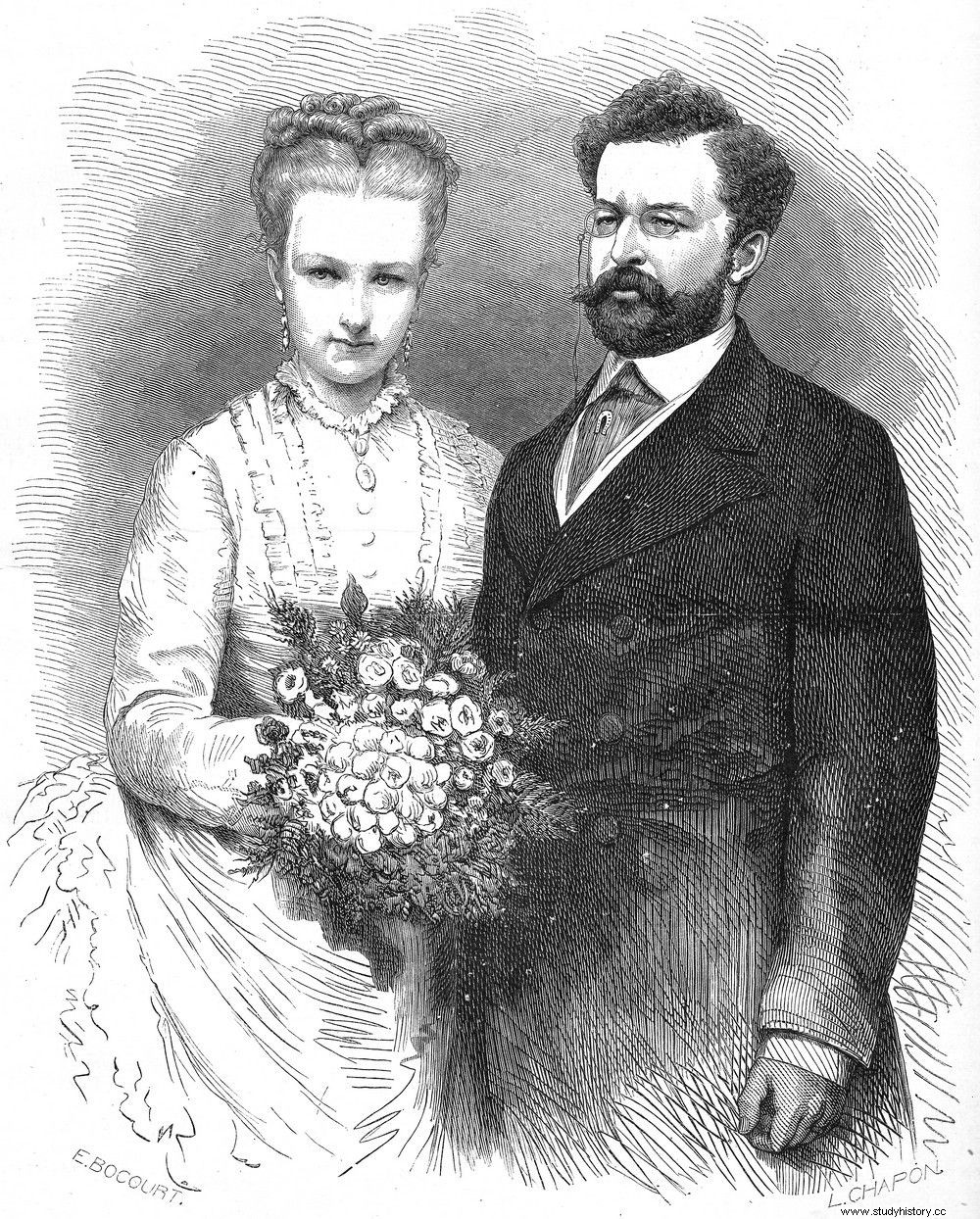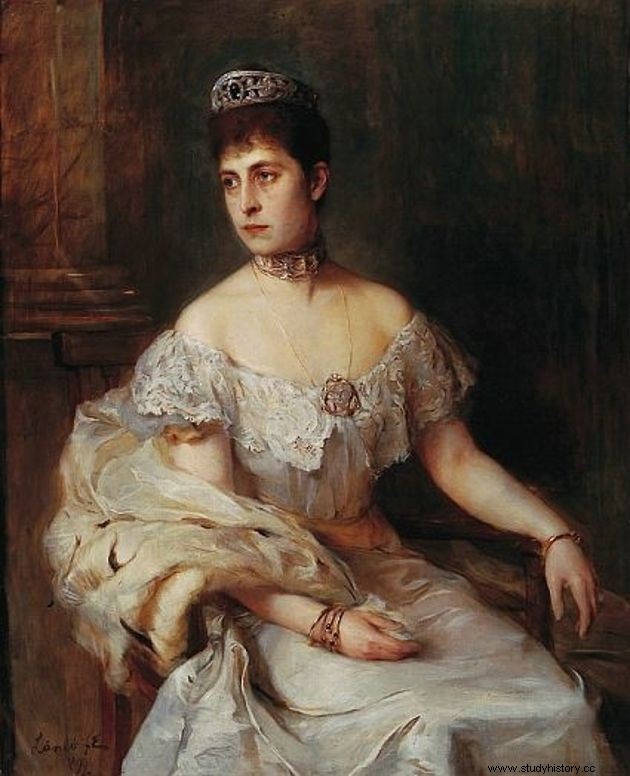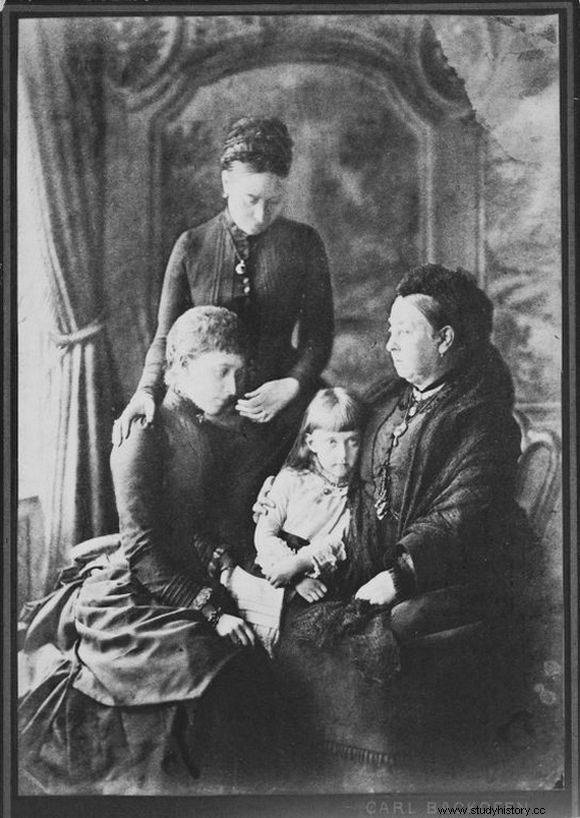You are to be a good and faithful wife. Bear children, obey father and husband. Want nothing but what they give you. Generations of princesses lived up to strict guidelines. But there were also those who said:enough! See for yourself what fate they have prepared for themselves.
Men assigned them roles, and conventions - limitations. However, Krystyna, Marianna, Luiza, Charlotta and Stefania did not want to submit. Each of them went their own way. And she had to accept the consequences of controversial decisions.
She preferred freedom from the crown
On December 8, 1626, the King of Sweden Gustav II Adolf waited for the birth of his son. However, Krystyna was born into the world. Her father died when she was five, leaving her with the crown. In accordance with his wishes, the only child received a great education. As Linda Rodriguez McRobbie writes in "Naughty Princesses" :
One of her teachers considered her diligent enough to report to parliament that she "is not like the other sexes" and "is brave and intelligent." As a child, she played mainly with toy soldiers with which she played various war maneuvers. She was a sharpshooter, a great amazon, and she could fence.

The Queen of Sweden Krystyna in her element. Painting by Sébastien Bourdon from 1653 (source:public domain).
Until she came of age, Krystyna was ruled by a regency council in Sweden. Its members wanted to marry the queen quickly, but she decided never to get married. She appointed her cousin, Karol Gustaw, the one who caused the Swedish Deluge, to succeed her.
In 1654, Krystyna gave the crown. She left the country - as we read in "Naughty Princesses" - before the end of the feast in honor of the new king. She went to Denmark, put on the men's outfit she was supposed to wear for the rest of her life, shaved her head, put on a men's wig and attached a sword. "Free at last!" She was about to shout.
Krystyna, until recently the head of the national church in a country where the Roman religion was punished even with death, converted to Catholicism. As a living image of the Pope's triumph, it was lavishly received in Rome. However, when she ordered the murder of the traitorous courtier, she became a murderer in the eyes of the world. And at the end of her life, she was considered an eccentric freak at best.
She couldn't repay her beautiful husband for what was fine
Marianna, born in 1810, was the daughter of the King of the Netherlands. In her youth, she fell in love with the exiled Swedish prince Gustawa. Her parents preferred to marry her off to Albrecht's Prussian cousin.
The princess moved to Berlin and gave Albrecht five children. The relationship made her unhappy, and her progressive views outgrown the environment. No wonder that when she inherited goods in Lower Silesia, she immediately left cramped Berlin. Soon her husband started to cheat on her openly and the relationship broke up.

Marianna at the age of 22. She did not know yet how much humiliation awaits her in life because of breaking the moral principles of her time (painting by Karl Wilhelm Wach, public domain).
The spouses started applying for divorce. The case dragged on for years and only accelerated when thirty-nine-year-old Marianna became pregnant with the horse, Johannes van Rossum . The divorce was made through the fault of a woman who disgraced her husband's family. Being pregnant with a man from outside the realm, she became a leper to the monarchs.
Over the years, Marianna had to fight for alimony and visits with children. The former brother-in-law, the King of Prussia, forbade her to stay in his country for more than twenty-four hours. She couldn't even enter her palace in Kamieniec Ząbkowicki through the main entrance.
A brave woman bought an estate in Bíla Voda near Kamieniec, under the rule of the Habsburgs. Thanks to this, she was able to look after her property. In Stronie Śląskie she founded a quarry, from which marble is still named after her today.
Jan Wilhelm, a child of her love, she sent to schools in the Rhineland. Unfortunately, at the age of 12, my son died of scarlet fever, which was a blow to Marianna. She died in 1883. She had herself buried next to her illegitimate son and Johannes van Rossum, the greatest love of her life.
She went to a psychiatrist because of love
Luisa, born in 1858, was the eldest daughter of the King of Belgium, Leopold II, the founder of the ruthless system of colonial exploitation in the Congo. Leopold wasn't much better in family life. He called his three daughters monsters. He showed them reluctance because neither of them was the longed-for son.
At the age of sixteen, Luisa married Philip von Sachsen-Coburg-Goth, almost twice her age. As Linda Rodriguez McRobbie writes:
The girl had no idea what to expect from her wedding night - no one ever realized her - and ran away as soon as she began to suspect what was going on . In her nightgown, she fled into the greenhouse.

Luisa and Philip's ill-fated marriage started badly and then it got even worse. Etching based on a wedding photo from 1875 (designed by Etienne Bocourt, made by Léon-Louis Chapon, photography by Géruzet Frères; public domain).
Philip did not give up. He offered her lecherous readings and showed her peppery souvenirs from the Far East. The lessons were fruitful, even too much. When the spouses moved to Vienna, Luisa shone at the imperial court. Flirty, scandals and romance became her element . Even the birth of two children didn't stop her.
Twenty years after her marriage, Luisa fell in love with a Croatian aristocrat, eight years her junior, Count Gez Matačić. Soon she escaped with him to the French Riviera, and when they had spent all their money, they took refuge in Croatia. Not for long.
Matačić was sentenced to six years in prison for fraud. As we read in "Naughty Princesses": At that time, her father gave Luiza an ultimatum:either you will return to her husband or you will end up in a madhouse. She chose the latter (...)
She would probably have stayed there for the rest of her days, if it weren't for her lover. Released from prison, Geza found her and organized her escape. They took refuge in Paris, where they lived in poverty. The princess drowning in debt became de facto disinherited by her father.
The following years Luiza traveled Europe with Matačić, escaping from creditors . When Geza died, she did not last even six months. She died with a portrait of her lover at her breast.
She hated motherhood
Charlotte Hohenzollern, born in 1860, was the eldest granddaughter of Queen Victoria of Britain, granddaughter, daughter and sister of the German emperors. She was a quarrelsome child that her mother didn't like.

A wayward child and a rebellious woman. In the painting Charlotte Hohenzollern at the age of 30 (author:Philip Alexius de László; public domain).
At the age of seventeen, the princess married Bernard III von Sachsen-Meiningen. A year later, she gave birth to Feodora. Charlotte hated being pregnant and mothering . After giving birth to her only child, she decided to have no more children.
She returned to Berlin and became the master of intrigue at her brother's court. It was Charlotta who organized a luxurious orgy for German aristocrats . Its participants were then blackmailed by a man who used descriptions of spicy court secrets compiled by a princess.

Idyllic photo showing 4 generations of the family:65-year-old Queen Victoria, her 44-year-old daughter Wiktoria (standing), 24-year-old granddaughter Charlotte and 5-year-old great-granddaughter Feodora. In fact, the relationship between these women was very strained, and especially Charlotte and Feodora's relationship soon became pathological (photo by Carl Backofen; public domain).
When the emperor found out about it, he sent her and her husband to a deep province. He never reconciled with his sister again. Charlotte's relationship with her only child was even worse - she openly admitted that she did not love her. Their relationship did not improve after the girl's wedding. As we read in "Naughty Princesses":
When Feodora, who was very eager to have children, was unable to get pregnant, her mother showed no sympathy. At the thought of her grandchildren, she growled, "No thanks, I can live without my damn litter! ”.
She was looking for a place for herself in show business
On February 1, 1965, the Duchess of Monaco, Grace Kelly, gave birth to her last child, Stefania. The princess was stubborn and explosive, but parenting problems deepened the bond between her and her mother.
In 1982, they were driving together in a car that went off the road. Grace died and Stefania suffered a long time from her mother's death and accusations that she was the cause of her.
When she recovered from the accident, she plunged into action. She created a series of bathing suits in which she presented herself in the press . She advertised perfumes and with the single "Ouragan" she reached the top of the charts . As befits a show business representative, she met other men every now and then.
After a brief engagement with Jean-Yves Le Fur, Stefania found herself in the arms of her bodyguard Daniel Ducruet, with whom she had two children. She didn't mind that Daniel had a wife and another illegitimate child.
After Ducruet's divorce in 1995, they married in civil law. A year later, Daniel was caught in hot hugs with a stripper. The Prince of Monaco immediately dissolved his daughter's marriage.

Stefania in her element - with the winner of the Silver Clown at the International Festival of Circus Art in Monte Carlo in 2007 (Encho Keryazov, license CC BY-SA 3.0).
Soon the princess was having an affair with another bodyguard . She broke up with him when she was pregnant. Thus, all three of her children were born while the mother was not married.
Soon after, Stefania went on tour with the artists of the Knie circus. She had an affair with the animal slayer Franco Knie. Some time later she remarried Adans Lopez Peres, ten years her junior acrobat and ... the star of this circus. The divorce took place after a year.
Now Stefania is giving charity - and has been the president of the Monte Carlo International Circus Festival for ten years. As you can see, the princess feels better in the arena than in the salons.
